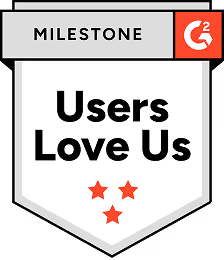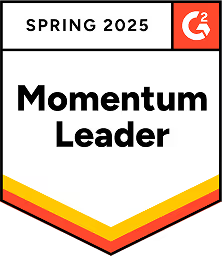Do Multiple Choice Emails Really Work?

What Are Multiple Choice Emails and How Can They Help You?
When used correctly, multiple-choice emails can be effective sales email that boosts your response rates. They are typically used to gauge a prospect’s interest in the conversation and create a next step for the sales rep.
Here’s how they work: a seller writes an email asking their prospect to select one of the provided options that relates best to them. It’s on the seller to come up with the list. If the prospect responds, the seller has their next step and can act accordingly. If they don’t respond, the seller might need to keep following up.
Multiple choice emails are simple to use and yes, effective at increasing reply rates (especially for cold outreach). They also are easy to adjust for best practices and can quickly become a part of your sales process. However, it's important to keep a few things in mind when crafting your email.
In this blog you'll find:
How to use multiple choice emails
How to create effective multiple choice emails
What to avoid when writing multiple choice emails
The Power of Multiple Choice Emails: Why You Should Be Using Them
According to our data, regie's multiple-choice emails have an average reply rate of 20.4%. Compare this to the non-regie email average of 15% and we can say that yes, multiple-choice emails work, but there's a right way to do it.
How to Use Multiple Choice Emails
If you're not using multiple-choice emails in your business, you're missing out on a powerful tool that can help you boost your bottom line. Multiple choice emails can be used for a variety of purposes, from gauging customer satisfaction to generating leads. Additionally, they can help you segment your audience so that you can send targeted messages.
Here's a look at how you can use them to boost your business. Use multiple choice emails for:
- Gauging customer satisfaction
- Finding out what people want or need
- Generating leads
- Segmenting your audience to send targeted messages
- Boosting your reply and click-through rates
1. Use Multiple Choice Emails to Gauge Customer Satisfaction
Are you wondering how satisfied your customers are with your products or services? If so, consider sending out a multiple-choice email to gauge their satisfaction levels. In your email, simply ask customers to select the option that best describes their level of satisfaction.
This will give you valuable insights that you can use to improve your business, without requiring your customers to click a link, navigate to a survey, schedule a call or take more than 2 minutes out of their day.
2. Use Multiple Choice Emails to Generate Leads
Multiple choice emails can also be used to generate leads. For example, if your company has an email marketing list, you could include a question about what interests your readers in your next newsletter or update. Then, provide a few options to choose from, such as receiving more information about your products or services. This is a great way to generate leads without being too pushy or salesy.
3. Use Multiple Choice Emails to Segment Your Audience
Another great way marketers can multiple choice emails is to segment your audience. This can be extremely helpful if you have a large list of subscribers. By sending out a multiple-choice email, you can segment your audience based on their interests. This will allow you to send targeted messages that are more likely to resonate with your readers.
4. Use Multiple Choice Emails to Boost Your Open Rates
If you're looking for a way to boost your email open rates, consider sending a multiple-choice email. Studies have shown that including a question in the subject line can increase open rates. So, if you're struggling to get your emails opened, try using a multiple-choice format.
5. Use Multiple Choice Emails to Increase Your Reply Rates
In addition to increasing your open rates, multiple-choice emails can also help you boost your reply rates, and this is where most sellers will want to focus. Multiple choice emails increase reply rates because people are more likely to answer when they're given a specific reason to do so. The simple act of sending back a one symbol reply is the easiest ask your prospect will receive all day.
Plus, it’s a great opportunity for prospects to get exactly what they want without having to explain themselves.
How to Create Effective Multiple Choice Emails That Get Results
If you want to use multiple-choice emails effectively in your sales cadences, there are a few things you should keep in mind. First, make sure that your questions are relevant to your audience. It’s tempting to keep selling, even in your multiple choice options, but doing so doesn’t put your prospect first. You need to think from their perspective to be able to provide a set of multiple choice options that are relatable, relevant or true for them.
An irrelevant set of multiple choice options might look like:
- I’d like a demo
- Let’s schedule a call
- Keep emailing me and I’ll get back to you soon
- Send over a few resources for me to look at
See the problem? The options don’t give the prospect a way out. Instead, options 1-4 are only furthering the seller’s agenda which isn’t likely to be received warmly.
A better example would look something like this:
- Not interested.
- Interested, but busy. Reach back out in a few months.
- You caught me at a better time. I can spare 15 minutes.
Notice that the list of options is short as well. Too many choices might overwhelm your prospects, so it’s best to cap your list at a maximum of four choices. Additionally, keep your questions short and to the point – people are more likely to answer a question that is quick and easy to understand.
Finally, your only call to action in a multiple choice email should be asking your prospect to select one of the options. The point of a multiple choice email is to make getting what they want as easy as possible for the prospect. This means the only next step that you should require of them is responding with the number or letter that corresponds with the option they’ve selected.
For example, your multiple choice CTA should come before the set of multiple choice options, and look something like this:
“You’re probably busy and I don’t want to be a bother. I would appreciate if you just answer 1, 2, or 3 to let me know where you’re at.”
Follow the CTA with a short set of concise, direct and relevant options for your prospect.
What To Avoid When Writing Multiple Choice Emails
Keep your language casual. Never send a multiple choice email that sounds templated, spammy or gimmicky. Usage of multiple choice emails for selling has increased, and if not executed correctly, can make a prospect feel like a name on a list rather than a valuable prospective buyer.
Remember that you’re not quizzing your prospect. When it comes to multiple choice emails, the name of the game is keeping things simple. They’re meant to make replying as easy as possible for your prospect, not give off the impression that they’re being interviewed.
Never start your sales campaign with a multiple choice email - your prospect doesn’t have enough information to answer your questions yet. Multiple choice emails perform best when they sent right before the break up email.
If you’re interested in shaking up conventional formatting and want to test multiple choice emails earlier in your email sequence, follow the same guidelines mentioned above- like short, concise sentences and no more than four options, but you’ll also have to also think hard about what you write.
Don’t start with options like, “I’m interested in seeing more.” Instead, your list should resemble a set of qualifying questions. Ask your prospect to tell you about their team size, their current process for whatever relates to your product, or if they’ve tried addressing a pain point before.
Here are a few examples of multiple choices that could be used earlier in a sales sequence. Just remember that we don’t recommend using a multiple choice in your intro email.
Are you using email marketing?
- Yes, and I send out regular newsletters and promotions
- Yes, but I only send emails occasionally
- No, I don’t collect email addresses
Are you using any tools or software to help you with lead generation?
- Yes, I use a few different tools
- Yes, but I only use one or two
- No, and I don’t see that changing
How often do you update your website?
- Monthly
- A few times per year
- Never, I’m satisfied with my website
Do you have a lead capture form on your website?
- Yes, and it’s highly visible
- Yes, but it’s not very noticeable
- No, I don’t want to bother my website visitors with forms
Have you ever tried running a contest or giveaway?
- Yes, and it was successful
- Yes, but it didn’t generate much interest
- No, I’m not sure how that would work
If you’re looking for multiple-choice email templates, there are a few places you can look. First, try searching online – there are many template databases that offer a variety of different options. We recommend adding your own flare if you do choose to start with a sales email template. You should always be in the habit of editing any templated emails you’re leveraging.
Additionally, you can check with your email marketing provider or even ask around within your network to see if anyone has any good suggestions. Finally, remember that you can always create your own template if you can’t find one that meets your needs.
If you're not currently using multiple-choice emails in your business, now is the time to start. These powerful emails can help you boost your bottom line in a variety of ways. If you’d like to learn more about improving your email campaigns, contact us. We can help build a sequence with you.
FAQs
Read more posts
View all BlogsNeed more help?
If you still have questions, make sure to check out our Help Center: there, you'll find all the tips & advice you'll need to get your team up & running with Regie.ai.









